More often than not, women are overshadowed in the art world. And while…

 Mawadah fel Zaman: On Palestinian Posters and Artistic Resistance
Mawadah fel Zaman: On Palestinian Posters and Artistic Resistance 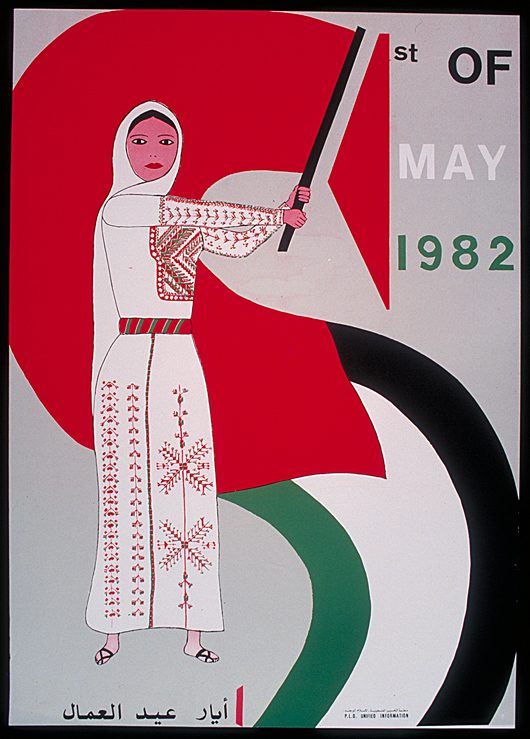

Initially, I planned a completely different piece for this month’s column, but as the situation in Palestine continues to worsen it became very apparent to me that all of our attention should be solely on amplifying Palestinian experiences and standing in solidarity in whatever capacity we each can. During the past weeks, I became very conscious of the way the art world often discusses Palestine as a story of the past, rarely engaging in the ongoing struggle, resistance, or revolutionary optimism which are essential to Palestinian Liberation. Artists and other art-adjacent people do this to distance themselves from the problem, avoiding confronting their complacency or responsibility to stand in solidarity, while also often exploiting Palestinian pain for their work. We need to ask ourselves: How does this work serve its subjects? What narrative does it push? Does this work preserve the integrity of people whose lived experiences it is inspired by? How do non-Palestinian artists benefit from Palestinian suffering? What work should we be pushing forward? The only art that feels absolutely vital the past few weeks is Palestinian posters.
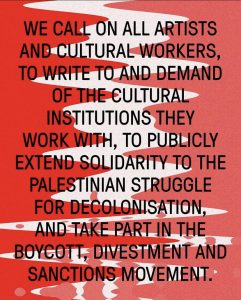

Design by Marwan Kaabour(@ustaz_marwan)
The peak of poster art was between the mid to late twentieth century where they were used in liberation movements, special occasions, political propaganda, commemorations of events, and more. In 1936, the infamous “Visit Palestine” poster was made by Austrian artist Franz Kruas for a Zionist organization aiming to attract more Jews to Palestine. The poster which illustrated an orange-hued Jerusalem full of houses, gardens, and Al Aqsa, disappeared into the archives until 1995 when it was revived and popularized by David Tartakover. Tartakover reprinted one thousand copies of the poster that would soon be used to the advantage of Palestinians. As liberationgraphics.com put it: “With this one poster pulled out of the Zionist attic, three core myths are debunked. The first myth is that Palestine had ever been a land without people. Obviously someone lived in these houses and someone tended these gardens. The second myth is that Palestine was a vast desert awaiting cultivation. The resplendent tree in the foreground suggests that the land surrounding Jerusalem was much more than barren desert. The third myth is that there never was a Palestine. Of course there was a Palestine, and here it is, called by name in a Zionist-published poster.”
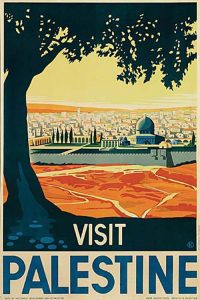

In the Nakba of 1948, Israeli settlers did not only target people and land, but they tried to completely decimate artistic and cultural Palestinian heritage. The reason for this is because that artistic and cultural heritage proves the richness of Palestinian history, life, and their ties to the land. Benay Blend writes: “As Ramzy Baroud explains, is “the story of Palestine is the story of the Palestinian people,” a history that centers, in particular, the narrative of their resistance. At this precise juncture in the Occupation’s history, cultural resistance is more important now than ever.” After displaced Palestinian artists were forced to relocate and rebuild communities across the diaspora, the rebuilding of artistic traditions and careers soon followed. In the 1960s, with the rise of liberation movements, seventeen artists including Suleiman Mansour and Tamam Al-Akhal, developed a visual vocabulary that would illustrate Palestinian struggle, identity, and nationalism. This visual vocabulary created recognizable iconography such as doves, keys, olive trees, keffiyehs, etc. which would all become staples of Palestinians’ own poster production. Since then, the Palestinian Production Project has archived over 14,700 posters both by Palestinians and Zionists to give a comprehensive look into the history of the land and occupation. The Palestinian posters host powerful political and cultural iconography, operating as a tool of resistance against the cultural erasure and ethnic cleansing of Palestine. Toni Morrison once said: “The best art is political and you ought to be able to make it unquestionably political and irrevocably beautiful at the same time.”


Jamal Al Mahamel II (2005)
Artist: Suleiman Mansour
Iconography: Clenched Fist, Dome of the Rock
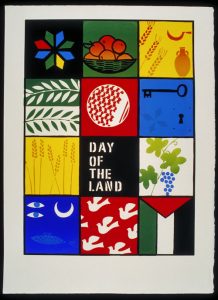

Day of the Land
Artist: Suzanne
Iconography: Key, Doves, Keffiyeh, Palestinian flag, Olives, Flowers, Agriculture, Sickle, Moon, Oranges
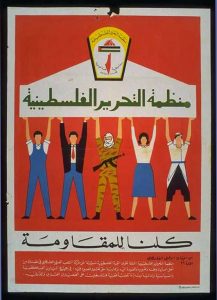

All for the Resistance (1965)
Artist: Ismail Shammout
Iconography: Weapons
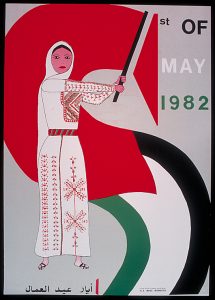

First of May(1989)
Artist: unknown
Iconography: Palestinian Flag, Tatreez/Traditional dress
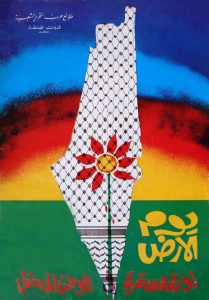

Continuous Revolution in the Occupied Homeland(1982)
Artist: Abd Almouty Abozaid
Iconography: Flowers, Keffiyeh, Rainbow, Sun
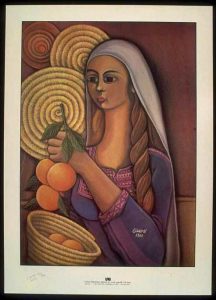

The Orange Harvest(1980)
Artist: Kamal Al Mughanni
Iconography: Oranges
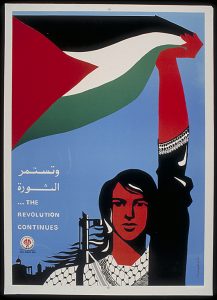

The Revolution Continues(1989)
Artist; Ghazi Inaim
Iconography: Palestinian Flag, Keffiyeh, Weapon, Clenched Fist
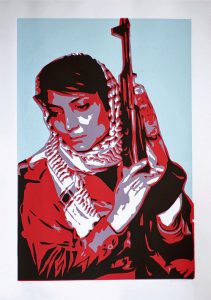

Leila Khaled-Silkscreen (2010)
Artist: unknown
Iconography: Keffiyeh, Weapon
Read more about Palestinian posters:





